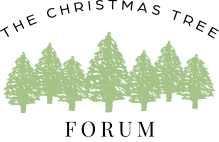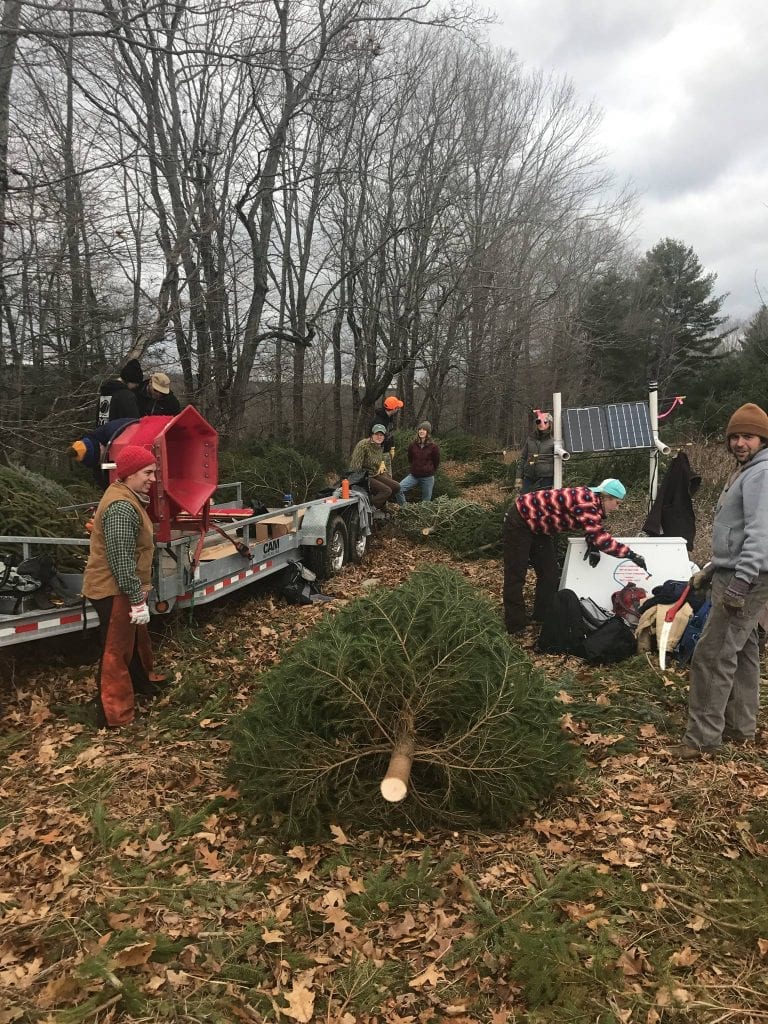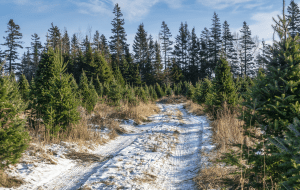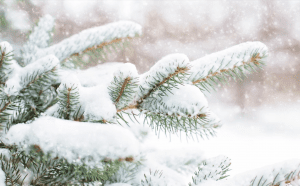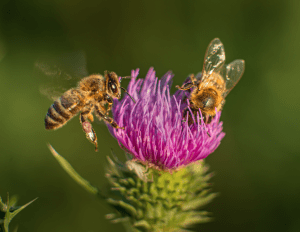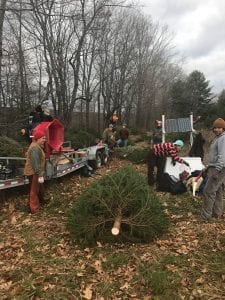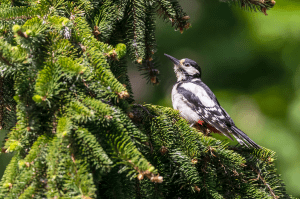Congratulations! You made it through the Christmas Tree Harvesting Season.
It is the most demanding time of the year for the Christmas tree growers – and perhaps the biggest opportunity for efficiencies. With a limited window of time when everything can be done, it requires lots of planning and concentrated manpower to be completed.
In the Christmas tree industry, like many industries, there is rarely one “right” answer that applies to all operations. For this reason, the following recommendations should be taken in the context of each individual operation – based upon the size, type, and location of the Christmas tree farm.
With this in mind – and while the Christmas tree harvesting is fresh in your mind, here are some considerations to make your harvest more efficient next year.
1. What work can you do ahead of harvest to make it easier?
Since Christmas tree harvesting can only be completed during a certain time of year, how can you reduce the amount of effort required during that time? It is definitely worth making extra preparations to ensure harvesting a planned and efficient process.
Flag every tree to be cut and record the size, grade, and lot # of the flags so you know exactly how many trees you will have to meet orders and how to best organize your harvesting schedule. If this employee would typically flag trees during harvest season, now they can be used to cut, drag, bale, etc.
Create a harvesting schedule or plan based on sales and production. If you know what trees are ready, where they are, what each customer needs, and when they need it, you can plan your harvest accordingly.
Butt pruning should be completed in the Spring and Summer months. This allows for trees to be cut more quickly, more easily, and more safely at harvest time.
Clean the Lot to get rid of brush, fallen trees, and even trees that will never be fit for sale. It will make it easier for draggers to bring trees to the road. Even if it only saves a couple of minutes per tree, this will add saved hours at Christmas tree harvesting time.
Build a better road system with more and higher quality roads. Large trucks and balers can be taken closer to the site of the cut tree if trees don’t have to be dragged as far. Crews can also travel between the unloading area and tree lot much faster.
2. What can you do to reduce the Christmas tree harvesting bottleneck?
A bottleneck is any part of the process that restricts the flow or output during the entire process. Put simply, you will not see an increase in production until the effect of the bottleneck is improved. It is good to know that the bottleneck is often a piece of equipment. Build your processes around reducing the bottleneck. For example, if the bottleneck is the baler – make sure it is running at full capacity with minimal downtime.
- There are no trees ready to load into the baler. Trees should be lined up beside the road and arranged so the baler team can easily load them. The person loading the baler should not be standing idle. It is best for trees to be constantly brought closer to the baler and arranged for quick and easy loading. If trees are too large or too far away, the person who is unloading the baled trees should help stop the jam, especially when the baler is parked and just getting started up.
- There is no staff available to load the baler. If the baler is the cause of the bottleneck, re-assign staff duties so more people are helping with the baling. If those cutting and dragging trees are ahead, they could take a break and help with baling.
- The baler is moving. There are two ways to improve this:
- Bring trees to the baler instead of bringing the baler to the trees. This will likely take more effort but if you have more than enough staff it may be worth it.
- Reduce the distance the baler needs to travel. This can be done by increasing stock density, planning an efficient baler route, and not taking the baler to the unloading area – especially if it’s far away from the field and attached to a tractor.
- The baler is down for fuel, maintenance, repair, or to be loaded with twine. All of these activities should be done before the day starts, during breaks, or at the end of the day. Conduct preventative maintenance on the baler before harvest season and replace any parts that may not last through the season. Don’t wait for something to come up, be proactive.
- Purchase better equipment. Invest in new technology.
- If the baler is your bottleneck, it might make sense to purchase a higher quality piece of gear. Spending extra money on a quality baler with a reliable motor will be worth the investment upfront to save you headaches during harvest.
- Purchase or rent more equipment. If the baler is your bottleneck, it may make sense to purchase or rent a second baler. If labor is available, production could double with an extra piece of gear.
3. How can you reduce non-value-added activities?
In “Lean” terms, a non-value-added activity is any step of the process that does not change the product.
Cutting and baling the Christmas trees are value-added steps. The following examples are all non-value-added or “wastes” that should be reduced or eliminated during Christmas tree harvesting.
- Transporting trees back and forth on your lot
- Walking from tree to tree
- Waiting for trees to be cut
- Waiting for trees to be dragged to the road
- Waiting for a tree to be baled before loading
- Re-baling a tree
- Fixing a broken piece of equipment
- Cutting trees that will not be sold
- Having untrained staff operating machines or equipment
This blog has been adapted from an article contributed to the Christmas Tree Council of Nova Scotia Journal by Robert Newcombe.
